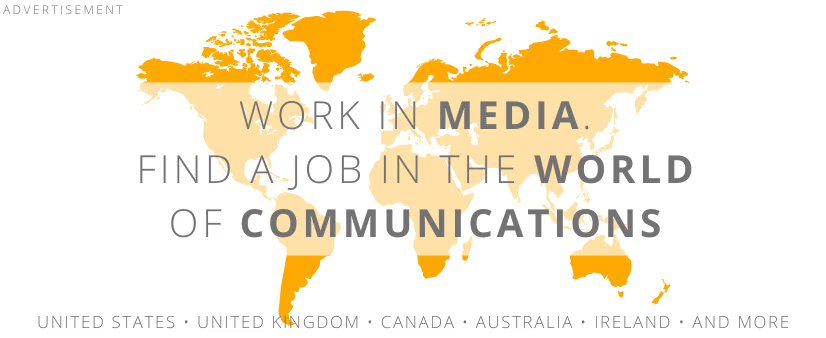In the Middle Ages, for example, there were "written newspapers" devoted initially to commercial matters (in Italy: "Scripta mercatorum," in Germany: "Handelsbriefe") and later to reports on extraordinary events. Regardless of their content, they were seen as "inventions" created "for the moment," which led to specific terms for them:
- in Italy: "avvisi,"
- in Germany: "Neue Zeitung,"
- in Poland: "nowiny" or "relacje."
Over time, societies, now emerging as audiences, began to demand more comprehensive and enduring forms of news, especially with the age of geographical discoveries, travels, and expeditions. Thus, a new form of press emerged - the periodical, with a title and a clear purpose. This press left no room for spontaneity or randomness; everything was carefully planned, including layout and format. This "newness" or "modernity" can be seen in the 15th-century "News from Constantinople," the first newspaper in Polish, as well as in German- and Latin-language publications associated with J. Decjusz and J. Dantyszek.
In the same century (in its latter half), with the growing social, political, and economic activity, there was a demand for more detailed news services than previously existed. The invention of Gutenberg’s press (c. 1450) became the realization of these dreams, enabling more efficient distribution of current news. From then on, mechanically reproducing newspapers at regular intervals ensured the reliable and consistent delivery of information.
However, there is debate among researchers about where the first printed periodicals appeared. Some consider Italy the birthplace of journalism, while others point to Germany, Spain, or the Netherlands. What is clear is that regular publishing began in the 16th and 17th centuries.
The following years saw the development of modern journalism, driven by contemporary cultural events (the Enlightenment), social-political shifts (the French Revolution in 1789 and, earlier, the English Revolution in 1688-1689), and technical-economic changes (the Industrial Revolution). A new journalistic approach combined current information with editorial commentary. The English publication "The Weekly Review," published three times a week by D. Defoe, introduced a new type of press dedicated to daily discussion. The ideology of the emerging bourgeoisie was popularized by so-called moral magazines, precursors to today`s opinion press, such as "Tatler" and "Spectator" by J. Addison and R. Steele. This model gained popularity across Europe, with Poland`s equivalent being "Monitor," whose first issue appeared on March 21, 1765, and continued bi-weekly until 1785, in an octavo format with an average of eight pages per issue.
The growing influence of journalism on public opinion led to new press genres: the column, report, essay, and editorial. The editorial, in particular, played a significant role, serving not only as a detailed discussion of daily events but also as an expression of the official views endorsed by the newspaper. The editorial boosted the readership of English newspapers like "Morning Post" and "The Times." A new press model also emerged based on individual authorship, lasting until the 19th century, when news agencies appeared.
The next phase in journalism’s development was marked by 19th-century social movements (the July Revolution in France in 1830, the Revolutions of 1848), which led to increased circulation (for example, by 1830, Paris had 20 dailies with a total circulation of 70,000 copies; by 1846, 28 dailies circulated over 180,000 copies) and typological diversification (children’s, professional, scientific, women’s, and illustrated magazines). Newspapers aimed at workers ("Gazeta Reńska") and peasants appeared.
Publishers began to realize that, besides shaping public opinion, the press could be profitable. From the mid-19th century, commercial press flourished, often featuring explicit content. Sunday newspapers focused on entertainment emerged, especially in England with "Observer" and "Sunday Monitor," but the real revolution was brought by J. Pulitzer’s American "Sunday World." His associate, Morill Goddard, even developed a canon for Sunday newspapers: the first pages would contain current news, followed by scientific content, sensational and crime stories, behind-the-scenes gossip with a focus on erotica, advice for lovers, and a comic supplement.
Today, around 50 Sunday newspapers are published in Europe, with the number constantly growing as society’s demand for entertainment and scandal increases. This period also saw the formation of a steady reading habit and, consequently, competition for readership and sales. To achieve these goals, publishers employed various strategies, such as organizing contests, lotteries, and even offering insurance. Another factor driving press development was the search for innovative technical solutions to speed up publication. Advertising became more active, and color, illustrations, and posters were used to attract readers.
News agencies, responsible for gathering and distributing information to the press, and later to radio and television, played an increasingly significant role in editorial work. The first such institution was established in France in 1835 by Havas, followed by others in Germany (Wolff) in 1849 and the United Kingdom (Reuter) in 1851.
The modernization processes, both technical and editorial, described above continued to grow over time, leading to further typological diversification of the press. From the mid-19th century, the role of illustrated magazines increased, followed by the development of multicolored publications. Women’s, youth, and children’s press saw particularly rapid growth ("Popcorn," "Tina," "Olivia"), while interest in opinion press gradually declined. In the 20th century, large-circulation illustrated dailies with sensational content, known as tabloids, became popular:
- German publications such as "Der Spiegel," "Stern," "Bild,"
- British publications like "The Sun" and "The Times,"
- and French publications "L`Express" and "Paris Match."
The highest circulation is achieved by magazines containing TV programs, horoscopes, and puzzles. Collector’s magazines, or partworks, such as "Factor X," "Ancient Civilizations," and Polish-language versions of foreign magazines like "Cosmopolitan," "Playboy," "National Geographic," and "Dziewczyna" (German "Mädchen") are very popular. The press has also become a medium for advertising distribution.
COMMERCIAL BREAK
New articles in section History of the media
The History of The New York Times. All the news that's fit to print
Małgorzata Dwornik
In the heart of 19th-century New York, when news from across the world traveled via telegraph and the newspaper was the voice of public opinion, two ambitious journalists created a modest four-page daily that would eventually become a legend.
FORTUNE. The story of the most exclusive business magazine
Małgorzata Dwornik
Half of the pages in the pilot issue were left blank. Only one printing house in the country could meet the magazine’s quality standards. They coined the terms "business sociology" and "hedge fund". They created the world’s most prestigious company ranking. This is the story of Fortune.
History of Le Soir. A Belgian daily once free for ground floor readers
Małgorzata Dwornik
It started with an unusual sales policy and articles written personally by the king. This is where the comic hero Tintin made his name. The "fake edition" from the II World War went down in history. "Le Soir" more than once found itself targeted by authorities, censors, and even... terrorists and hackers.
See articles on a similar topic:
The Fourth Estate in America: The Irresistible Charm of the Glass Screen
Urszula Sienkiewicz
While war raged in Europe, a new craze took hold in the United States. In just a few years, a new idol took the prime spot in American homes - the television.
The History of Television
BARD
In 1875, Ernest von Siemens constructed the first photocell. Two years later, Julian Ochorowicz, a Polish psychologist, developed the theoretical foundations of monochromatic television. In 1924, Scotsman John Baird transmitted an image over a distance. In Poland, we waited until 1952 for the first broadcast.
Thai Rath. History of Thailand’s oldest newspaper
Małgorzata Dwornik
A newspaper once attacked with grenade launchers reached over a million copies in circulation. Its founder built schools and chartered planes to print boxing match photos faster than the competition. Thai Rath isn’t just a paper. It’s a media empire born... just in case.
#mediaHISTORY podcast. Listen on Youtube, Spotify or Apple Podcasts [LINK]
Reporterzy.info
History of media and journalism. The biggest titles, famous journalists, groundbreaking events in the press, radio, television and internet industries in the world. Stories developed and told by Małgorzata and Bartłomiej Dwornik from the online weekly Reporterzy.info.





























